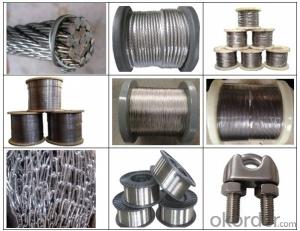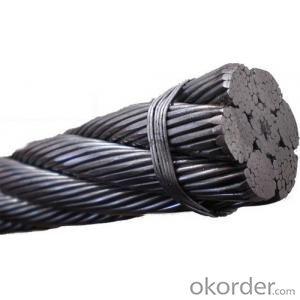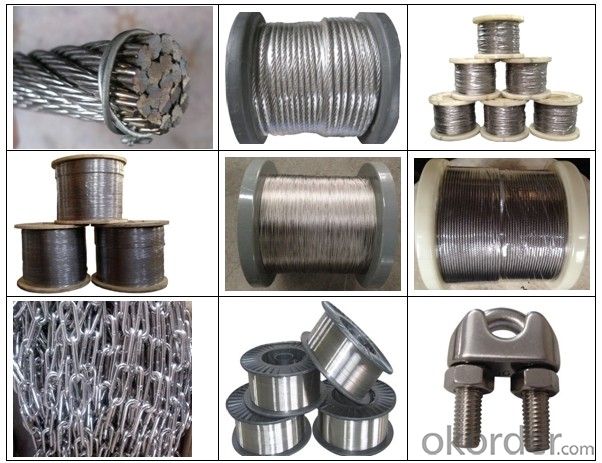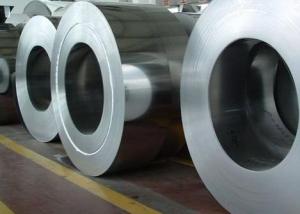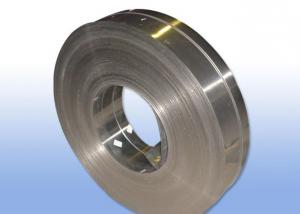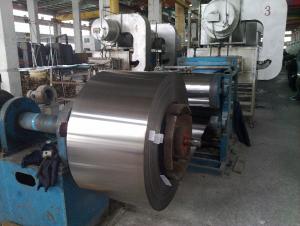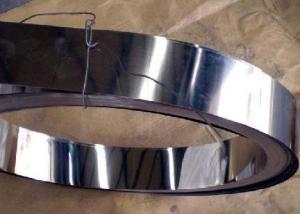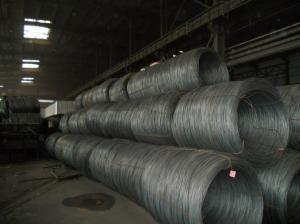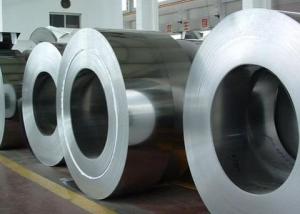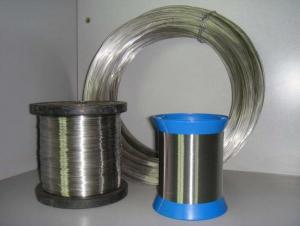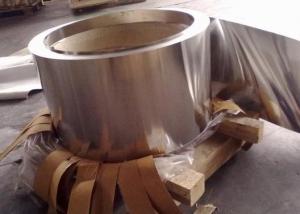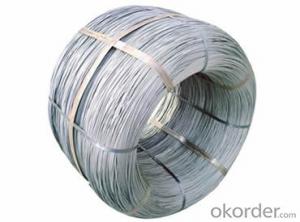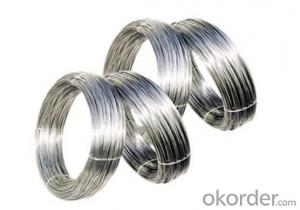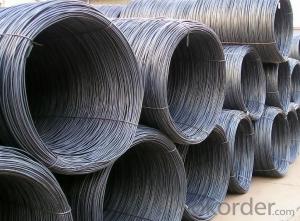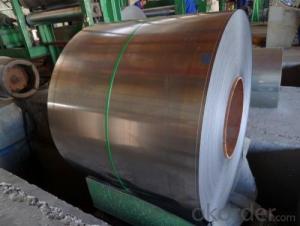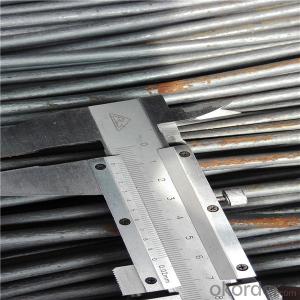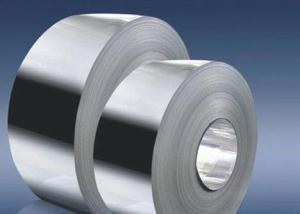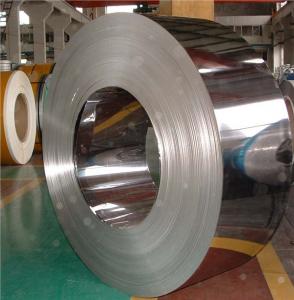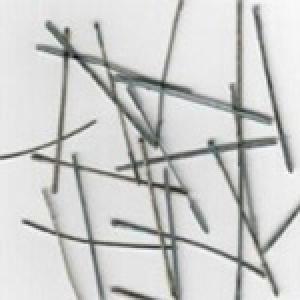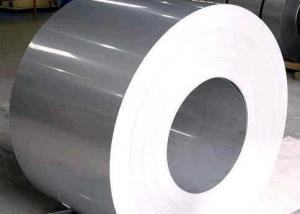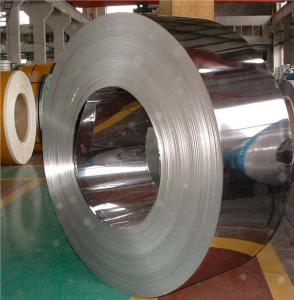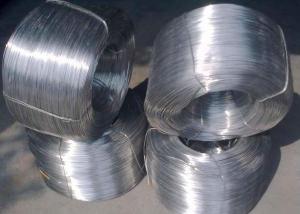8mm Hot Rolled Low Carbon Steel Wire Coil/Steel Wire Rod
- Loading Port:
- Qingdao
- Payment Terms:
- TT OR LC
- Min Order Qty:
- 40 m.t.
- Supply Capability:
- 20000 m.t./month
OKorder Service Pledge
OKorder Financial Service
You Might Also Like
Specification
8mm Hot Rolled Low Carbon Steel Wire Coil/Steel Wire Rod
Specification
Name | 8mm hot rolled low carbon steel wire coil/steel wire rod |
Standard | GB, SAE, SGS, ASTM |
Diameter | 8mm |
Coil weight | 1.8-2.1tons |
MOQ | 40tons |
Deliver Time | 15 days after receipt of L/C or deposit by T/T |
Packing | In coil and load in container, if large quantity, by bulk vessel; can be packed as customers' special requirements |
Payment terms | 1).100% irrevocable L/C at sight.2).30% T/T prepaid and the balance against the copy of B/L.3).30% T/T prepaid and the balance against L/C |
Application | Building material, machinery parts |
Chemistry of material based on SAE1006B and SAE1008B
Grade | Chemical Composition(%) | |||||
C | Mn | Si | S | P | B | |
SAE1006B | 0.03~O.07 | ≤0.32 | ≤0.30 | ≤0.045 | ≤0.040 | >0.0008 |
Mechanical properties | ||||||
Yield strength(N/mm2) | Tensile strength(N/mm2) | Elongation(%) | ||||
250-280 | 350-380 | ≥32 | ||||
Grade | Chemical Composition(%) | |||||
C | Mn | Si | S | P | B | |
SAE1006B | 0.03~O.07 | ≤0.32 | ≤0.30 | ≤0.045 | ≤0.040 | >0.0008 |
Mechanical properties | ||||||
Yield strength(N/mm2) | Tensile strength(N/mm2) | Elongation(%) | ||||
250-280 | 350-380 | ≥32 | ||||
Why we are your best choice in China:
1. We are a professional MANUFACTURE of Prestressed Concrete steel wire (PC wire) and Steel wire rod in China.
2.Now our company has 8 advanced production lines and a whole set of product detecting instruments.
3.We have exported less than 50,000 tons abroad and this year we will make a better achievement.
4.We provide the best payment condition and Short Delivery Time.
FAQ:
1, Q: What's the Payment method?
-A: L/C at sight or T/T.
2, Q: What's the Delivery port?
-A: The main ports are Qingdao and Tianjin, we also can deliver to other ports to meet your requirements
3, Q: What's the delivery time?
-A: 15days upon receipt of advance deposit.
Products Show
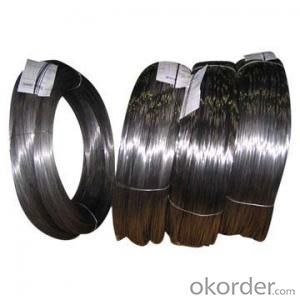
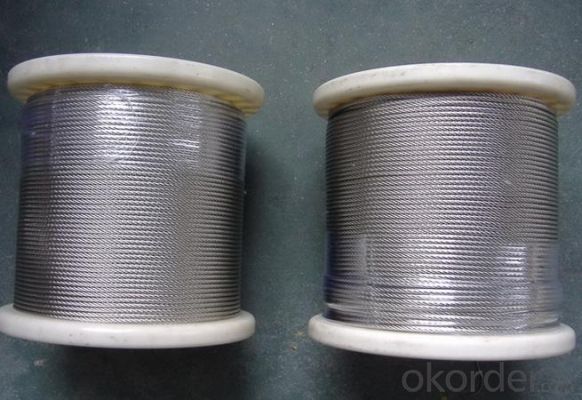
- Q: Can stainless steel wire be used for electrical conductivity?
- Yes, stainless steel wire can be used for electrical conductivity. While stainless steel is not as conductive as materials like copper or aluminum, it still has a relatively high electrical conductivity compared to other metals. This makes it suitable for various electrical applications, such as in electrical wiring, heating elements, and electrical connectors. Stainless steel wire also offers the advantage of being resistant to corrosion, making it a durable and reliable choice for electrical conductivity in environments where moisture or harsh conditions may be present. However, it is important to note that the electrical conductivity of stainless steel can vary depending on its composition and specific alloy.
- Q: Can stainless steel wire hooks be used for hanging heavy objects?
- Yes, stainless steel wire hooks can be used for hanging heavy objects. Stainless steel is known for its high strength and durability, making it suitable for supporting heavy loads. The wire hooks are designed to provide a secure and reliable hold, ensuring that the heavy object remains in place without causing any damage or accidents. However, it is crucial to ensure that the hooks are properly installed and securely anchored to a strong and stable surface to prevent any mishaps. Additionally, it is advisable to check the weight capacity and specifications of the specific stainless steel wire hooks being used to ensure they can safely support the weight of the heavy object.
- Q: Can stainless steel wire be used for structural purposes?
- Stainless steel wire is indeed applicable for structural purposes. Its notable characteristics include high strength, resistance to corrosion, and durability. These qualities render it a fitting material for an array of structural applications, including bridges, buildings, and construction projects. By serving as reinforcement in concrete structures, stainless steel wire enhances their strength and stability. Moreover, it finds utility in cable and wire rope applications, providing support and tension to various structural systems. Furthermore, stainless steel wire exhibits resilience to extreme temperatures, making it suitable for scenarios involving thermal expansion and contraction. All in all, stainless steel wire stands as a versatile material that can effectively serve structural purposes.
- Q: What are the disadvantages of using stainless steel wire?
- There are a few disadvantages of using stainless steel wire that should be taken into consideration. Firstly, stainless steel wire can be quite expensive compared to other types of wire. This can be a disadvantage for those on a tight budget or those who need large quantities of wire for their projects. Secondly, stainless steel wire has a higher electrical resistance compared to other metals. This means that it may not be the best choice for applications that require low resistance, such as electrical circuits. Additionally, stainless steel wire can be more difficult to work with compared to other types of wire. It is known to be harder and less malleable, which can make it challenging to bend or shape as desired. This can be a disadvantage for those who require intricate or complex wire designs. Moreover, stainless steel wire may not be suitable for certain environments or applications. It is prone to corrosion when exposed to certain chemicals or environments with high acidity. In such cases, alternative materials may be more appropriate to ensure the wire's longevity and functionality. Lastly, stainless steel wire is not as strong as some other types of wire, such as steel or titanium. This means it may not be suitable for applications that require high tensile strength or load-bearing capabilities. Overall, while stainless steel wire has many advantages, it is important to consider these disadvantages and assess whether they align with the specific requirements of your project before choosing to use it.
- Q: What's the difference between a stainless steel cup and a nonmagnetic one?
- Non-magnetic stainless steel, that is, austenitic stainless steel, 200 series and 300 series are non-magnetic, and magnetic stainless steel belongs to martensitic steel, the 400 line is also called stainless steel, iron belongs to this kind. With magnetic stainless steel, magnetic permeability is strong, suitable for electromagnetic ovenTheoretically speakingNon-magnetic stainless steel pots do no harm to your bodyThere are many aluminum kettles. They contain other metals. There are many aluminum kettles that do harm to the body, not experts
- Q: What material of stainless steel screws is not easy to strip?
- If stainless steel screws easily slip teeth, there may be no hard, if only through hard will solve the questions, that don't have to change what material. And if it is in the device using the screw, the force is too large so that the adjustment screw form, good strength. If it is not, then you can only directly replace the screw material, change a little better. Faced with screws, wire 1010, base to 1006 screws, wire produced screws, then the wire produced by their own screw hardness is not so good
- Q: Is stainless steel wire magnetic?
- Yes, stainless steel wire is usually considered to be non-magnetic. While it is primarily made of iron, it also contains other elements such as chromium and nickel, which help create a protective oxide layer on the surface of the steel. This oxide layer is what gives stainless steel its corrosion-resistant properties. However, the presence of these alloying elements also reduces the magnetic properties of stainless steel, making it non-magnetic or weakly magnetic.
- Q: What are the different types of stainless steel wire screens?
- There exists a variety of stainless steel wire screens to cater to specific applications and objectives. Some commonly used types include: 1. Plain weave screens: These screens are woven by crossing wires over and under in a simple crisscross pattern. They are typically employed in general-purpose screening applications due to their strength and durability. 2. Twill weave screens: Similar to plain weave screens, twill weave screens have wires woven in a diagonal pattern, resulting in a tighter and more stable weave. They are often utilized in finer filtration and sieving applications. 3. Dutch weave screens: Dutch weave screens have a complex weave pattern with tightly woven wires in the warp direction and larger gaps in the weft direction. This structure provides excellent filtration performance, making them suitable for precision filtration and separation processes. 4. Welded wire screens: These screens are created by welding individual wires together at their intersections. They are renowned for their high strength and rigidity, making them ideal for heavy-duty applications such as security fencing or machine guards. 5. Expanded metal screens: Expanded metal screens are formed by cutting and stretching a metal sheet, resulting in diamond-shaped openings. They offer good airflow, visibility, and protection, commonly used in architectural and decorative applications. 6. Perforated metal screens: Perforated metal screens are produced by punching holes into a metal sheet, creating regularly spaced openings. They offer versatile functionality, allowing precise control over the size and distribution of the openings. They find application in acoustic panels, ventilation systems, sorting, or grading processes. When selecting the appropriate stainless steel wire screen, it is crucial to consider specific requirements like desired mesh size, strength, corrosion resistance, and compatibility with the surrounding environment.
- Q: What are the different wire shapes available for stainless steel wire?
- Stainless steel wire comes in a variety of shapes, each with its own purpose and use. Round wire, which is the most common shape, is known for its versatility and flexibility. It can be used for weaving, knitting, and general wire work. Flat wire, on the other hand, has a flat cross-section and is often used in applications that require stability and strength, such as springs, clips, and electrical contacts. Its flat shape allows for efficient use of space and better conductivity. Square wire, with its four equal sides, offers improved strength and stability compared to round wire. It is commonly used in architectural and decorative applications, as well as in jewelry making and intricate wire designs. Shaped wire refers to wire that has been specifically formed into non-traditional shapes like triangles, hexagons, or ovals. Shaped wire allows for unique and customized applications, especially in industries like automotive, aerospace, and medical. In addition to these shapes, stainless steel wire is available in different gauges or thicknesses, allowing for further customization based on specific requirements. Ultimately, the choice of wire shape depends on the intended use and desired properties, such as strength, flexibility, conductivity, or aesthetic appeal.
Send your message to us
8mm Hot Rolled Low Carbon Steel Wire Coil/Steel Wire Rod
- Loading Port:
- Qingdao
- Payment Terms:
- TT OR LC
- Min Order Qty:
- 40 m.t.
- Supply Capability:
- 20000 m.t./month
OKorder Service Pledge
OKorder Financial Service
Similar products
Hot products
Hot Searches
Related keywords
